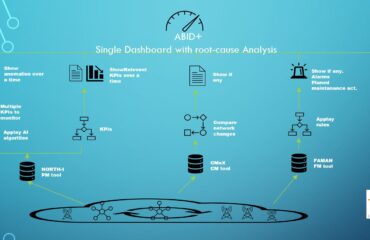What is Edge Computing?
Edge computing represents a revolutionary shift in information technology (IT) architecture, where data processing is moved closer to its source rather than relying on centralized data centers. This approach optimizes real-time data handling, reduces latency, and enables efficient operations for modern businesses.
Why Is Edge Computing Important?
In an era dominated by the Internet of Things (IoT), sensors, and connected devices, businesses generate enormous volumes of data. Traditional centralized computing struggles with challenges like high latency, bandwidth limitations, and network reliability. Edge computing emerges as the solution by bringing computational power to the data’s origin, ensuring seamless operations and real-time insights.
How Does Edge Computing Work?
Edge computing works by decentralizing data processing. Instead of sending raw data from a device to a central data center for processing, it processes the data locally, at the “edge” of the network. This reduces the need for constant communication with distant servers, enabling faster decision-making and reducing bandwidth usage.
For instance, in a retail setting, edge computing could analyze video surveillance in real time to optimize store layouts or inventory decisions. Similarly, in manufacturing, edge systems predict equipment maintenance needs, minimizing downtime.
The Role of Edge Gateways
Edge computing relies on edge gateways—devices situated close to the data sources. These gateways perform critical tasks like:
- Data normalization and preprocessing: Filtering and preparing data for further analysis.
- Local analytics: Generating actionable insights before sending only relevant information to centralized systems.
- Resilience: Ensuring operations continue even in cases of network disruption.
Edge vs. Cloud vs. Fog Computing
Edge, cloud, and fog computing are interconnected concepts but differ significantly:
- Cloud Computing: Centralized processing with extensive computational resources, best for tasks requiring scalability and high storage capacity. However, it faces challenges in latency-sensitive applications.
- Edge Computing: Focuses on low latency and real-time processing by placing computational resources closer to the data source. Ideal for applications like smart cities, autonomous vehicles, and industrial IoT.
- Fog Computing: Serves as an intermediary layer between edge and cloud, offering additional computational power while maintaining proximity to data sources.
Real-World Applications of Edge Computing
Edge computing drives innovation across industries:
- Smart Cities: Managing traffic systems, public safety, and utilities in real-time.
- Healthcare: Enabling wearable devices to monitor and analyze patient health instantly.
- Industrial IoT: Enhancing operational efficiency in factories through predictive maintenance.
- Transportation: Supporting autonomous vehicles with low-latency decision-making.
Challenges and Considerations
While edge computing offers immense benefits, it comes with challenges such as:
- Data security: Decentralized data handling increases the risk of breaches.
- Infrastructure costs: Deploying and maintaining edge devices can be expensive.
- Interoperability: Ensuring smooth communication between edge and cloud systems requires careful planning.
Edge Computing: The Future of IT
As businesses continue to embrace digital transformation, edge computing will play a pivotal role in reshaping IT architectures. With advancements in AI, 5G, and IoT, edge computing is poised to revolutionize how data is processed, stored, and utilized.
Whether you’re managing a factory, a fleet of autonomous vehicles, or a smart city, edge computing offers the agility, speed, and intelligence needed to thrive in today’s data-driven world.




